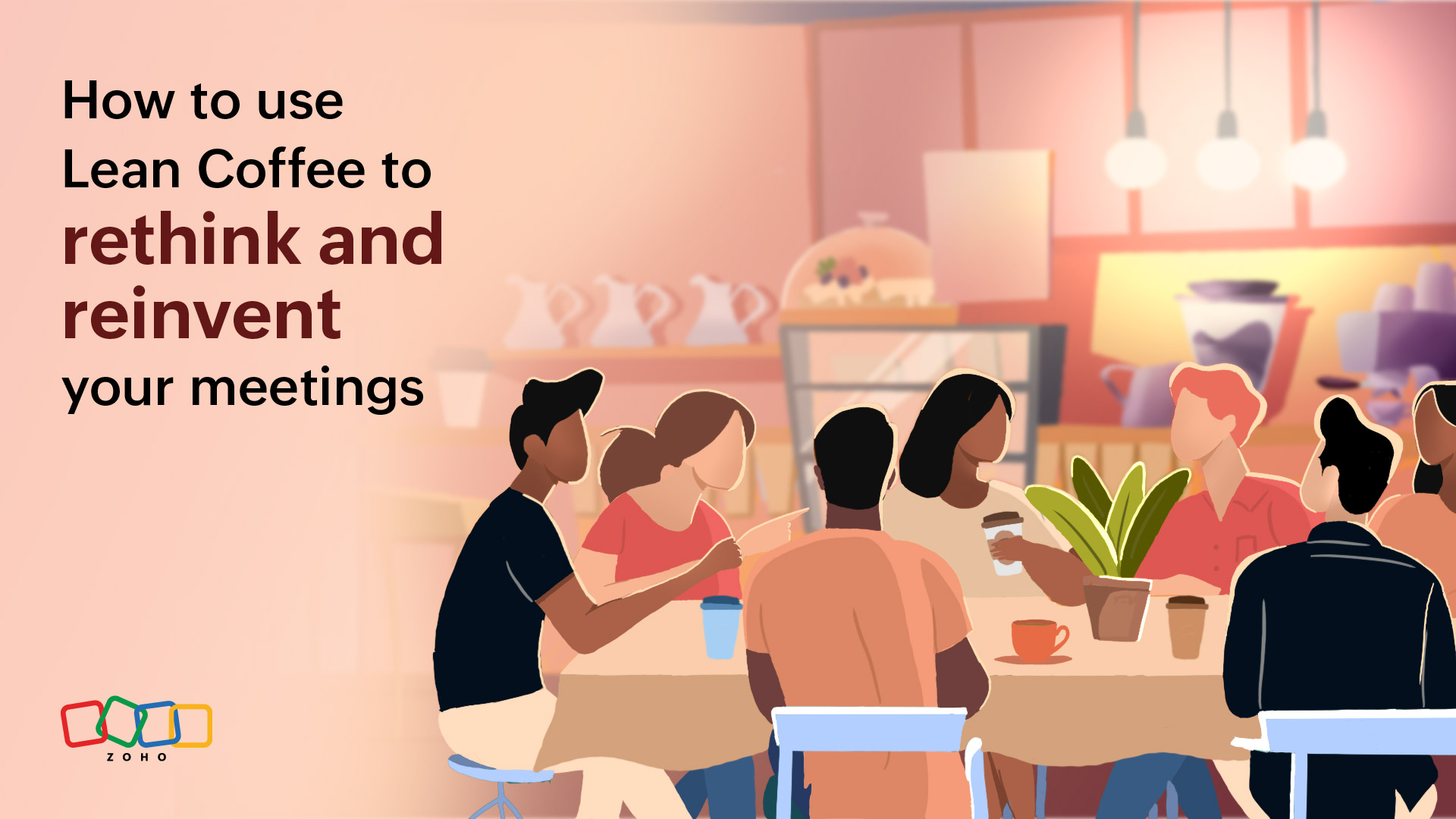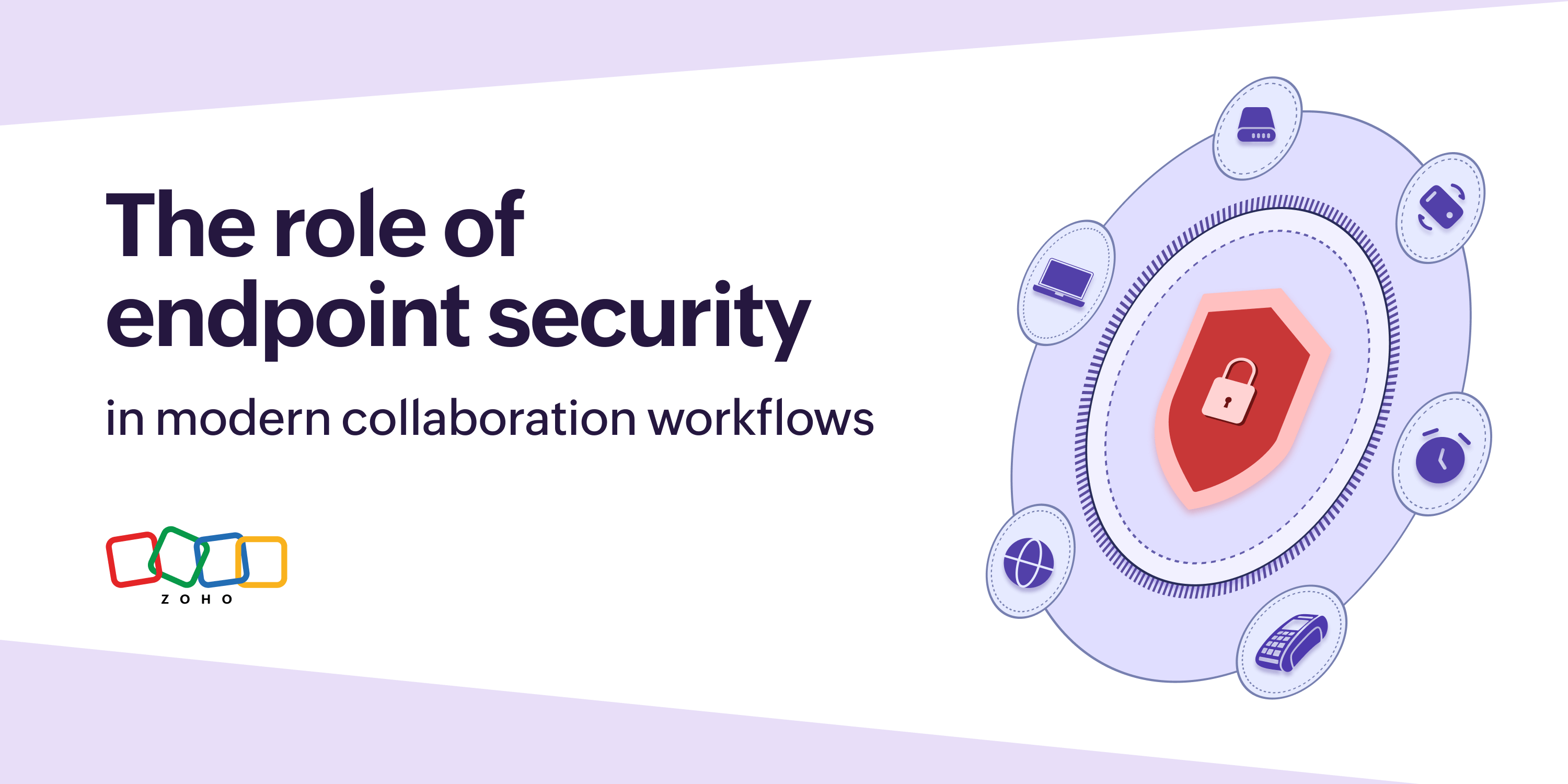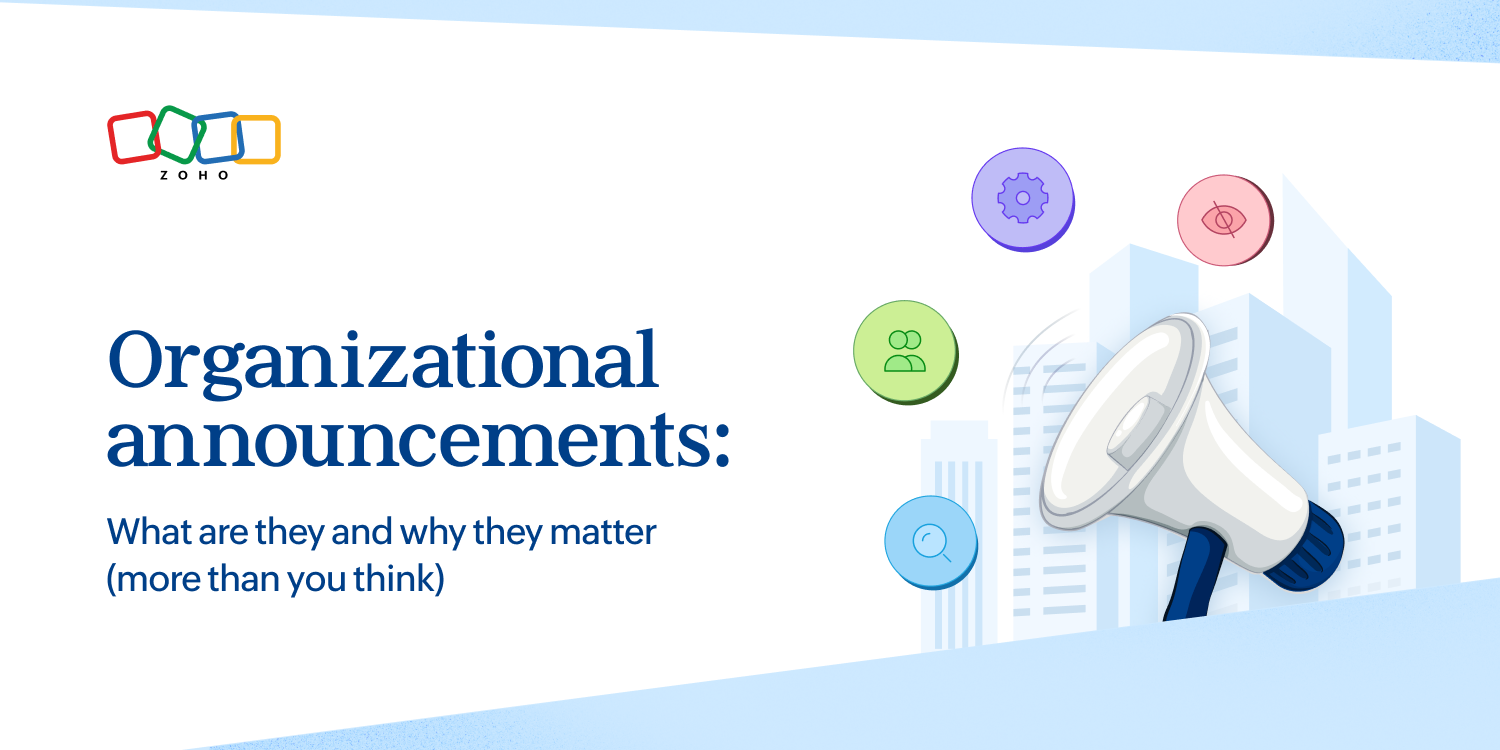- HOME
- All Products
- Collaboration
- How to use Lean Coffee to rethink and reinvent your meetings
How to use Lean Coffee to rethink and reinvent your meetings
- Published : December 24, 2024
- Last Updated : March 24, 2025
- 639 Views
- 7 Min Read
For many people, having a clear agenda is the golden rule for effective meetings. In theory, your agenda gives people a chance to prepare and keeps your meeting focused. But what if an agenda wasn’t a prerequisite for an effective meeting? What if forgoing the agenda altogether led to a more collaborative and productive sit-down? That’s the premise behind a Lean Coffee meeting.
What exactly is Lean Coffee?
Lean Coffee meetings are structured, but agenda-less discussions. Rather than showing up with a detailed list of what will be discussed, participants work together to determine what they need to talk about and then spend time digging into the topics they agreed upon.
The concept was created by Jim Benson and Jerry Lightsmith in 2009. Both have expertise in Lean principles and wanted to create a way for people to have structured, productive meetings without locking themselves into a predefined agenda.
Since its founding, it’s become a popular meeting format, particularly on Agile teams.

How to run a Lean Coffee meeting
Lean Coffee meetings are agenda-less and informal, but that doesn’t mean these sessions are chaotic free-for-alls. While the focus is on collaboration and flexibility, there is still a general approach to running a productive Lean Coffee meeting. Here are six steps to run this type of meeting (and make the most of it).
1. Set up a Kanban board
Your entire Lean Coffee meeting will revolve around a Kanban board—a simple series of columns that indicate the status of a particular discussion topic. You’ll have columns for the following categories:
To discuss: All of the topics you generate will land here to start.
Discussing: When you’ve selected the topics you’ll discuss during that session, you move them to this column.
Discussed: Once you’ve exhausted a topic, you move it here.
Some people use alternative names for those columns. For example, you could name the first column “topics” instead of “to discuss.” But the above three categories capture the general concept and flow of information during a Lean Coffee session.
As the facilitator, get your Kanban board set up ahead of your session so it’s ready when your participants join. If your meeting is in-person, you can use a whiteboard and sticky notes. However, if you’re leading a remote session, you’ll need to opt for a digital, collaborative whiteboard.
2. Generate topics
TIMING: 10 minutes
A typical Lean Coffee meeting lasts 60–90 minutes. After welcoming your participants, you’ll all spend the first 10 minutes generating topics. You can assign a theme or leave things completely open-ended to collect the most ideas.
Each person uses sticky notes (whether real or virtual) to write down their topic ideas and add them to the “to discuss” column. Every idea gets its own sticky note.
3. Describe the topics
TIMING: 5 minutes
Once your group is done generating topics, you’re ready to figure out which ones you’ll discuss during that session. Before soliciting votes and opinions, get everybody on the same page by doing the following:
Briefly describe each topic so people understand what it is.
Group similar topics together.
Toss out duplicate topics.
Doing so whittles down your list and makes it easier for people to understand what’s on the table before casting their votes in the next step.
4. Cast your votes
TIMING: 5 minutes
One of the best things about a Lean Coffee session is that it’s collaborative. Everybody gets an equal say in what’s discussed, and that’s where this voting step comes in.
Every participant gets two votes (although, some people allow three votes instead) to indicate the topics they’re most interested in discussing. People can vote for the same topic twice, or they can split their votes between different topics. Either way, they’ll cast their votes by adding a symbol (such as a dot) to a sticky note.
Once everybody has voted, you tally the votes to identify the topics people are most interested in. Ideally, you’ll identify two to five key topics to focus on during this session. Move those topic sticky notes to the “discussing” column.
5. Engage in your discussion
TIMING: 10 minutes per topic
Now you’re ready to get into the good stuff: talking about each topic. Start with the topic that has the most votes and then work down from there.
Set a timer for 10 minutes (some teams do five minutes depending on how many topics they’re trying to get through) and discuss the topic in detail as a team. When time is up, work together to decide whether to continue the conversation or move on to your next topic.
Remember to maintain your collaborative and democratic spirit throughout these discussions. One person shouldn’t dominate the conversation, so solicit contributions and opinions from group members when you need to. That’s your job as the facilitator.
6. Decide what to do with your leftover topics
You’ll inevitably have topics left in your “to discuss” column at the end of your meeting. You can either save them for your next meeting or ditch them and start completely fresh the next time you come together.
You get to decide what works best for your team. However, if you’ve pushed off a topic two or three times, it’s a solid indicator that people aren’t all that interested in digging into that subject, and you can likely safely remove it from your backlog.
What are the benefits of Lean Coffee?
A Lean Coffee meeting might seem like it goes against everything you thought you knew about running productive meetings. But, as counterintuitive as this approach is, it offers many compelling benefits.
Democratize your decision-making
Rather than handing down topics from on high, everybody gets a hand in shaping what’s discussed during the meeting. When people contribute to the decision-making, they’re more likely to be engaged in and enthusiastic about the discussion.
Focus on the most important or relevant topics
We’ve all been in meetings where unnecessary tangents take over. Lean Coffee’s collaborative approach allows you to filter out the noise and drill down to the topics that team members feel are most pressing and pertinent.
This can lead to more lively discussions and debates rather than wasting time on topics that are nothing more than fruitless distractions.
Stay flexible and adaptable
Not locking yourself into a rigid agenda means you have the wiggle room to meet the current needs and priorities of the group.
For example, perhaps you recently received a piece of user feedback that could influence the future direction of your product. That’s an important and potentially time-sensitive topic, and a Lean Coffee meeting means the team can bump it to the top of the list.
Run more inclusive meetings
It’s easy for more introverted voices to get lost in meetings. Only 48% of introverts say they’re satisfied with their participation levels in meetings, compared to 85% of extroverts.
With a Lean Coffee meeting, everybody has an equal voice in deciding which topics will be discussed. Since this happens with silent and independent voting, it gives even your most introverted team members a low-pressure way to contribute and steer the meeting.
Reduce meeting fatigue
People don’t get tired of meetings; they get tired of useless meetings. Because the group works together to determine what should be discussed, meetings inherently feel more relevant, focused, productive, and valuable. That alone goes a long way in making meetings seem less draining and groan-worthy.
5 quick tips for running your Lean Coffee meeting
One of the great things about the Lean Coffee meeting format is that it’s relatively straightforward. Following the six steps above will help you run a productive first session, but here are five more tips to keep in mind as you facilitate this meeting.
Set clear expectations: The Lean Coffee concept might be unfamiliar to many of your participants. During your first meeting, spend a few minutes explaining the approach, why you’re running your meeting this way, and how members are expected to contribute.
Use the right tools: A Lean Coffee meeting is commonly associated with a whiteboard and sticky notes. Those are the go-to tools for an in-person session, but that doesn’t mean you can’t run this meeting remotely. Look for a simple and intuitive collaborative whiteboard to make it easy for every person to contribute.
Establish time limits: Keep your meeting on track by setting time limits for each of your discussion topics. Use a timer to make sure you don’t run over your designated timeboxes.
Know your role: As the meeting facilitator, you’re there to guide the discussion, not dominate the conversation. While you can participate in suggesting topics, it’s usually better to step aside and stay exclusively focused on facilitating the conversation rather than actively contributing.
End with action items: At the end of your meeting, spend a few minutes summarizing your next steps and aligning on who owns those action items. Any type of meeting is most productive when it leads to real action and tangible outcomes.
Skip the agenda and increase your impact
There are plenty of times when a meeting agenda is warranted. However, there are other situations when skipping the agenda in favor of a collaborative Lean Coffee meeting is the better way to go. For example, a Lean Coffee meeting is a great fit for when:
Discussion points aren’t clear or fully defined
Attendees have various concerns to address
You want to brainstorm or tackle issues as a group
You’re leading a recurring meeting with constantly evolving topics
Keep in mind that you don’t need to go all-or-nothing on the Lean Coffee approach. For example, you can stick with a more traditional, agenda-driven meeting most of the time and then opt for a Lean Coffee meeting for a quarterly team check-in.
Commit to experimentation, and you’ll land on the style and cadence that achieves the ultimate goal of any meeting: pulling the best contributions out of your team.
 Kat Boogaard
Kat BoogaardKat is a freelance writer focused on the world of work. She writes for both employers and employees, and mainly covers topics related to the workplace such as productivity, entrepreneurship, and business success. Her byline has appeared in The New York Times, Fast Company, Business Insider, Forbes, and more.


